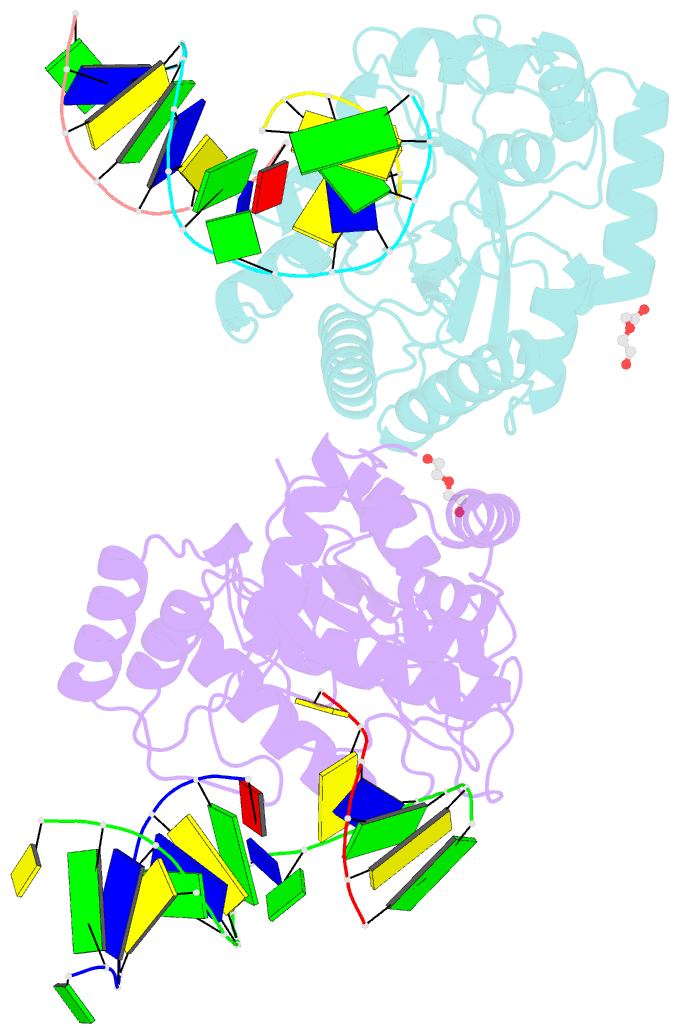Summary information and primary citation
- PDB-id
- 4k1g; SNAP-derived features in text and JSON formats;
DNAproDB
- Class
- hydrolase-DNA
- Method
- X-ray (1.9 Å)
- Summary
- Structure of e. coli nfo(endo iv)-h69a mutant bound to a cleaved DNA duplex containing a alphada:t basepair
- Reference
- Mazouzi A, Vigouroux A, Aikeshev B, Brooks PJ, Saparbaev MK, Morera S, Ishchenko AA (2013): "Insight into mechanisms of 3'-5' exonuclease activity and removal of bulky 8,5'-cyclopurine adducts by apurinic/apyrimidinic endonucleases." Proc.Natl.Acad.Sci.USA, 110, E3071-E3080. doi: 10.1073/pnas.1305281110.
- Abstract
- 8,5'-cyclo-2'-deoxyadenosine (cdA) and 8,5'-cyclo-2'-deoxyguanosine generated in DNA by both endogenous oxidative stress and ionizing radiation are helix-distorting lesions and strong blocks for DNA replication and transcription. In duplex DNA, these lesions are repaired in the nucleotide excision repair (NER) pathway. However, lesions at DNA strand breaks are most likely poor substrates for NER. Here we report that the apurinic/apyrimidinic (AP) endonucleases--Escherichia coli Xth and human APE1--can remove 5'S cdA (S-cdA) at 3' termini of duplex DNA. In contrast, E. coli Nfo and yeast Apn1 are unable to carry out this reaction. None of these enzymes can remove S-cdA adduct located at 1 or more nt away from the 3' end. To understand the structural basis of 3' repair activity, we determined a high-resolution crystal structure of E. coli Nfo-H69A mutant bound to a duplex DNA containing an α-anomeric 2'-deoxyadenosine:T base pair. Surprisingly, the structure reveals a bound nucleotide incision repair (NIR) product with an abortive 3'-terminal dC close to the scissile position in the enzyme active site, providing insight into the mechanism for Nfo-catalyzed 3'→5' exonuclease function and its inhibition by 3'-terminal S-cdA residue. This structure was used as a template to model 3'-terminal residues in the APE1 active site and to explain biochemical data on APE1-catalyzed 3' repair activities. We propose that Xth and APE1 may act as a complementary repair pathway to NER to remove S-cdA adducts from 3' DNA termini in E. coli and human cells, respectively.





